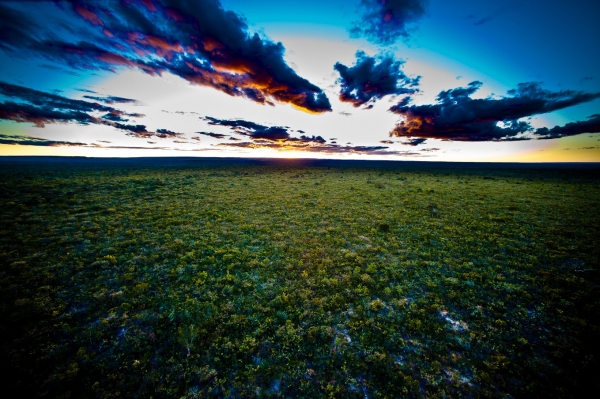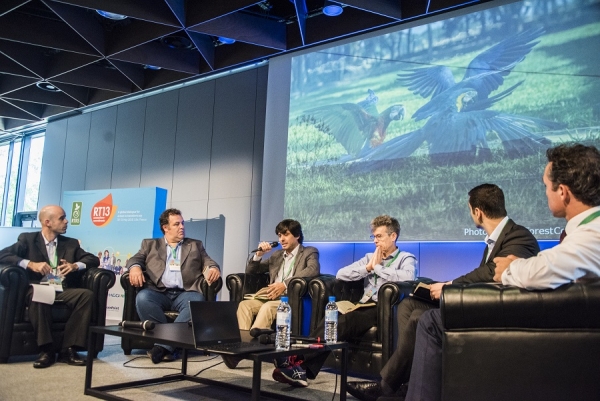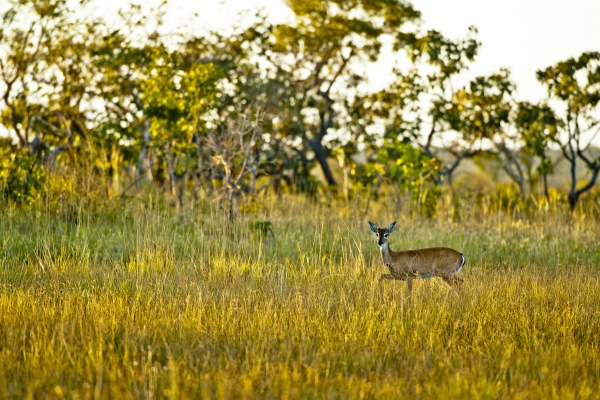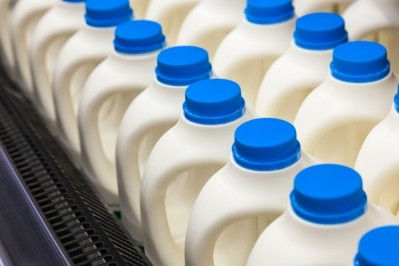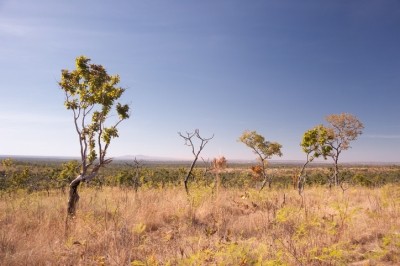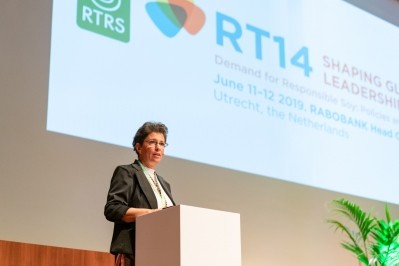Dispatches from Roundtable on Responsible Soy (RTRS) RT13 Conference in Lille
Action in Cerrado: How do you turn research and pledges into true multi-stakeholder change?
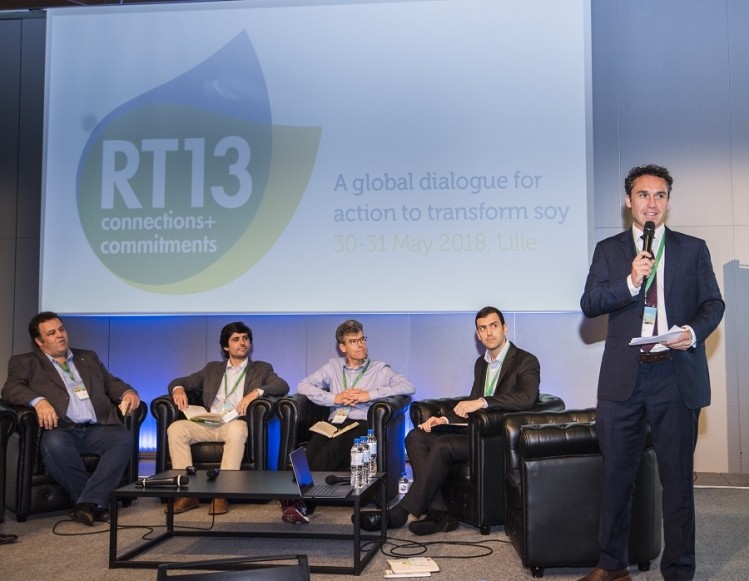
In September 2017, the 'Cerrado Manifesto' was published by a range of Brazilian organizations, including WWF-Brazil, The Nature Conservancy (TNC) and Greenpeace Brazil, among others, calling on industry to put a stop to deforestation and native vegetation conversion. The manifesto outlined that extremely high deforestation rates in recent years had made the Cerrado – a vast, tropical savannah biome covering around 500m acres of Brazil –“one of the most threatened ecosystems on the planet”. Between 2013 and 2015, it said 18,962km² of the land had been destroyed and that the Cerrado today had already lost 50% of its original area.
In October 2017, one month after the Manifesto was published, the Roundtable on Responsible Soy (RTRS) and more than 20 global, big-brand stakeholders including McDonalds, Tesco, Walmart and Unilever, among others, endorsed the manifesto in a 'statement of support' (SoS) that called for an end to the destruction of forests and native vegetation in the Cerrado. The SoS now has more than 60 signatories.
Soy responsibility?
According to the Brazilian Association of Vegetable Oil Industries ABIOVE, the Cerrado was responsible for 50% (17 million hectares) of Brazil's soy acreage in the 2016/2017 crop year.
Speaking at the RTRS's RT13 Conference in Lille last week, as part of a special spotlight on the Cerrado region, ABIOVE's executive president André Nassar said there was definitely a “consensus” amongst industry that “soy in Brazil shouldn't be associated with deforestation”.
Citing ABIOVE data, Nassar said action had already been taken and the “soy deforestation footprint” in Cerrado was “really going down”.
Considering Cerrado as a divided region – 'Consolidated Cerrado' and the 'Matopiba Region' (the most highly-concentrated soybean production and vegetation conversion across the states of Maranhão, Toc antins, Piauí and Bahia) – he said there had been an overall reduction in deforestation and native vegetation conversion for soy.
In 'Consolidated Cerrado' between 2007 and 2014, for every 1 hectare of soy expansion there was 0.04 hectares achieved through deforestation – 4% of total expansion of soy displaced native vegetation. In the 'Matopiba Region' every 1 hectare of soy expansion cleared 0.52 of native vegetation – 52% displacement for expansion of soy. Nassar said that between 2014 and 2017, while rates of deforestation and native vegetation conversion in 'Consolidated Cerrado' for soy production were the same, rates in the 'Matopiba region' dropped to 14%.
“So, having those numbers together, we estimate that soy expansion was responsible for around 7% of deforestation of the Cerrado that took place from 2013-2014,” he said.
“...This is very important for us to keep in mind in order to understand what kind of commitments the industry is proposing.”
Zoning – 'one of the greatest tools implemented in Brazil'
Nassar said ABIOVE's stance was to take a two-step approach that established legal and illegal deforestation 'zones' for soybean production, monitored by the Brazilian government and controlled with permits but developed in “an open process with contributions from the civil society”, but also plan and agree on future expansion in Cerrado.
“...It will not be easy to convince farmers that zoning is something that can be important for site-prevention (…) but we think it's time for us, not for us as an industry but for us as a civil society, consumers, and retailers that are participating; it's time for us to discuss the zoning and develop that zoning.”
If action was taken now, Nassar said, pilots could be introduced next year. “With that, I think we'll be able to have a big jurisdiction called the 'Brazilian Cerrado' where brands and consumers will be really comfortable with the information we'll be providing and with that, we'll be sharing the risks... The future is that.”
Edegar de Oliveira Rosa, head of agriculture and environment at WWF-Brazil, said zoning was already government mandated in Brazil for sugarcane, defining 'no-go' areas, and was “for sure, one of the greatest tools implemented in Brazil”.
Oliveira Rosa agreed it would be a fantastic tool for the Cerrado because the region was set to become one of the “biggest frontier in terms of agriculture in the world”.
Expansion of soy production into native vegetation had to stop and zoning, he said, was the ideal mechanism to achieve this.
“The challenge we have is all the governance situation. How feasible is it to have the government on board as soon as possible?”
Soy holds a 'very powerful key'
Tiago Reis, researcher and PhD candidate in land-use sciences at Belgium's Université Catholique de Louvain, said the soy industry had a hugely important role to play in kickstarting and maintaining this type of change.
“The soy industry shows a certain level of stickiness in trade relationships and sourcing. This means, more or less, the industry doesn't change their sourcing or trade partners very quickly. This also means industry can be very powerful and effective in inducing transformations than other industries and even many governments. So, the soy industry holds a very powerful key that can block most of this disordered expansion,” he told attendees. “... And it can issue signals to change the behavior of many actors, related or indirectly related, to the soy chain.”
Daniel Salter, responsible sourcing manager at Tesco and member of the SoS for the Cerrado Manifesto Steering Committee, said signatories to the SoS – including retailers, manufacturers, livestock producers and feed companies from across the globe – wanted to support and collaborate with actions on the ground by local stakeholders to promote sustainable agricultural development in the Cerrado.
“As buyers and users of soy and cattle products from the Cerrado, we think we have a role to play in supporting the development of solutions….We encourage our supply chain partners to adopt new tools and technology to help overcome some of the technical land-use challenges to identifying and protecting important native vegetation in the Cerrado…The Agroecological Zoning proposal is new to us as the Steering Committee and we look forward to following progress of this….if this is as effective for supporting sustainable land use planning as the zoning for the sugarcane sector, then this sounds like a fantastic approach for the soy sector too.”
Speaking to FeedNavigator, Jorn Schouten, manager of environmental commodities at ACT Commodities, said sourcing sustainably certified soy, like RTRS certified, also had an important role to play and could better involve some companies who had shown initial interest in the Cerrado via the SoS.
“You see with some brands, based on the Cerrado Manifesto because they signed a statement of support, that they want to do something and one of the options is to buy RTRS credits... I see that with a few companies but I don't have a feeling it's extremely happening,” he said. “...There are companies that have signed it but what does that really mean for them and the Cerrado?”
For now, Schouten said certification schemes around soy remained “niche” and more applicable to “those bigger guys” but could really help link up change in the entire supply chain.
But what is 'deforestation' and 'zero conversion'?
James Allen, executive director at O Lab and member of Brazil's Cerrado Working Group (GTC) – set up in 2017 to plan action against deforestation in Cerrado, said the biggest hurdle to progress was defining 'deforestation'.
“Basically, deforestation can mean different things to different people,” Allen said to attendees at the conference. Many NGOs, for example, have proposed zero conversion of native vegetation, irrespective on the type of land use – i.e. there shouldn't be any conversion for agricultural use. Others consider it could be regulated at government level with legal and illegal deforestation or that for zero deforestation policies, re-forestation should be factored in.
“There are different levels of stringency... So, I think we're not yet in agreement. One of the things we're grappling with is coming to some kind of consensus on definitions,” he said.
Oliveira Rosa agreed but said stakeholders were “getting there” on definitions. The challenge most were facing was defining the common goal of 'no conversion', he said. “Most of the initiatives are talking about how to exclude the conversion. But what is the way, or the path, to get there? Are we on the process of conversion? These are some of the discussions we're having.”
Mark Murphy, strategic advisor and consultant to the Soft Commodities Forum – a membership platform of commodity majors: Archer Daniels Midland, Bunge, Cargill and Louis Dreyfus Company – agreed that consensus on definitions was important but also on mapping and reporting.
“There are a lot of tools out there but we really need fact-based, science-based tools to monitor the mapping... We want to figure out some voluntary methodologies for monitoring so we can help bring others along with us. We need to be reporting apples to apples; oranges to oranges,” Murphy said.
Beyond the Cerrado...
However, soy production wasn't just impacting the Cerrado region in Latin America or the world and there were other important environmental hotspots that deserved attention, said Ulises Martinez Ortiz, officer for agriculture and environment at Fundaci'on Vida Silvestre Argentina.
Speaking to FeedNavigator, Ortiz said the Chaco region in Argentina, for example, had thousands of endemic species and still had high deforestation rates – more than 500,000 hectares per year (around half of the Cerrado rates).
“We have original communities, social problems; it's a very remote place with a lack of many services, roads and basic necessities. So, it has very similar conditions to Cerrado and the drivers for deforestation are the same – soy, cattle and other land speculation. So, one of our challenges is how to raise Chaco awareness and knowledge in the world,” he said.
Ortiz said plenty could be learned from action so far in the Cerrado, including strong links with academia to drive awareness and information and multi-stakeholder dialogue facilitated by working groups.
Cristiane Lourenço, manager of food chain relations and sustainability for Bayer Brazil, agreed industry had to take learnings in Cerrado wider, even just within Brazil.
“Cerrado is one of the main areas of soybean production in Brazil and a very important environmental area. However, Brazil has many more important areas for agriculture, such as the south of the country where there are thousands of small farmers working as well,” Lourenço said.
What was important, she said, was that industry helped farmers - Bayer Brazil, for example, worked with farming cooperatives in the south of Brazil to collaboratively improve sustainability through projects like Nossa Agua to protect water springs.
“Farmers want to do their job and protect such areas as they know this is sustainable for them. And they are already doing so. But we need the whole market to see it and recognize that if you want food, farmers need help to do much more... This is key for sustainable agriculture. We need to collaborate and we need all parts of the value chain working on that so farmers can really reach our main goal of feeding the world and protecting the environment to ensure a sustainable future.”
